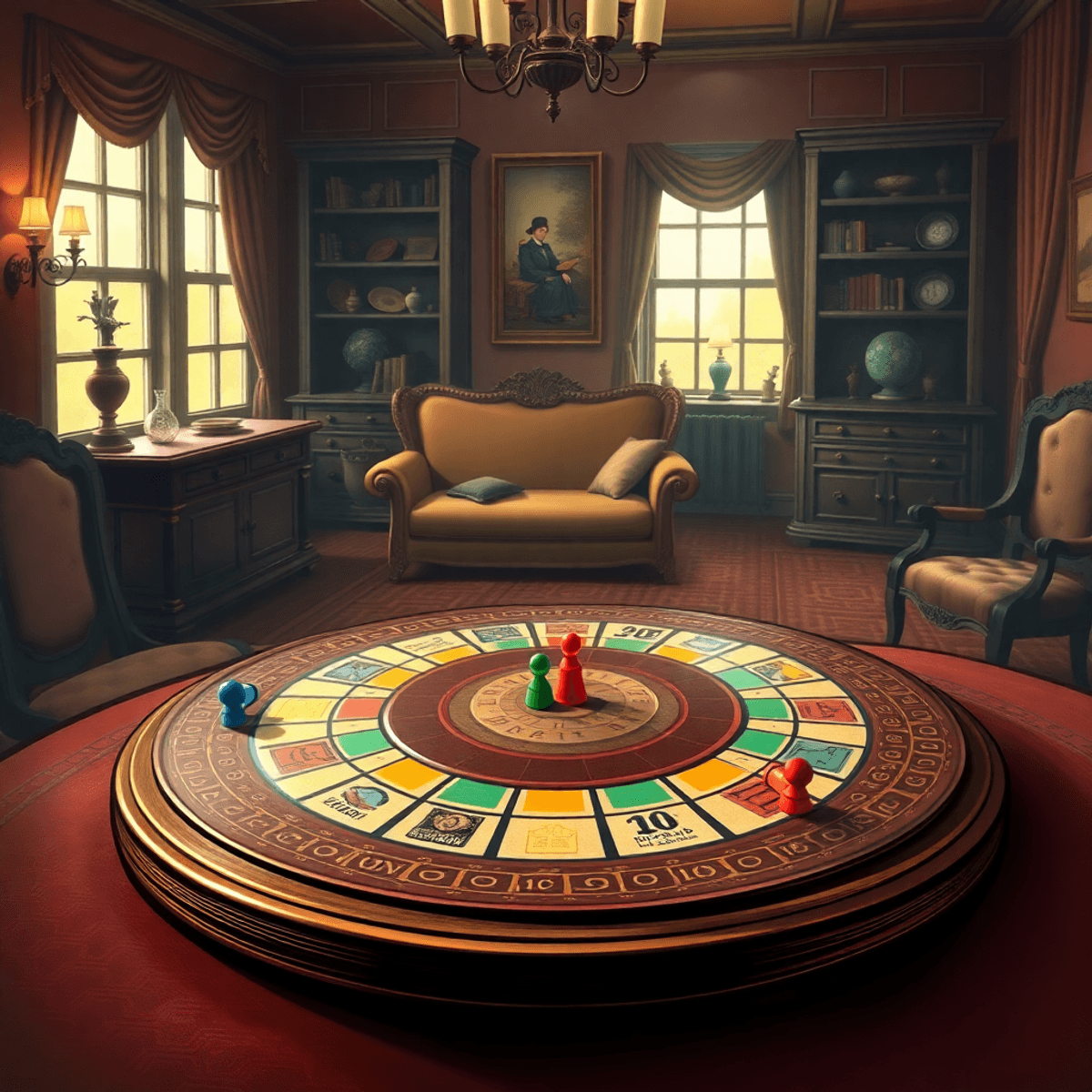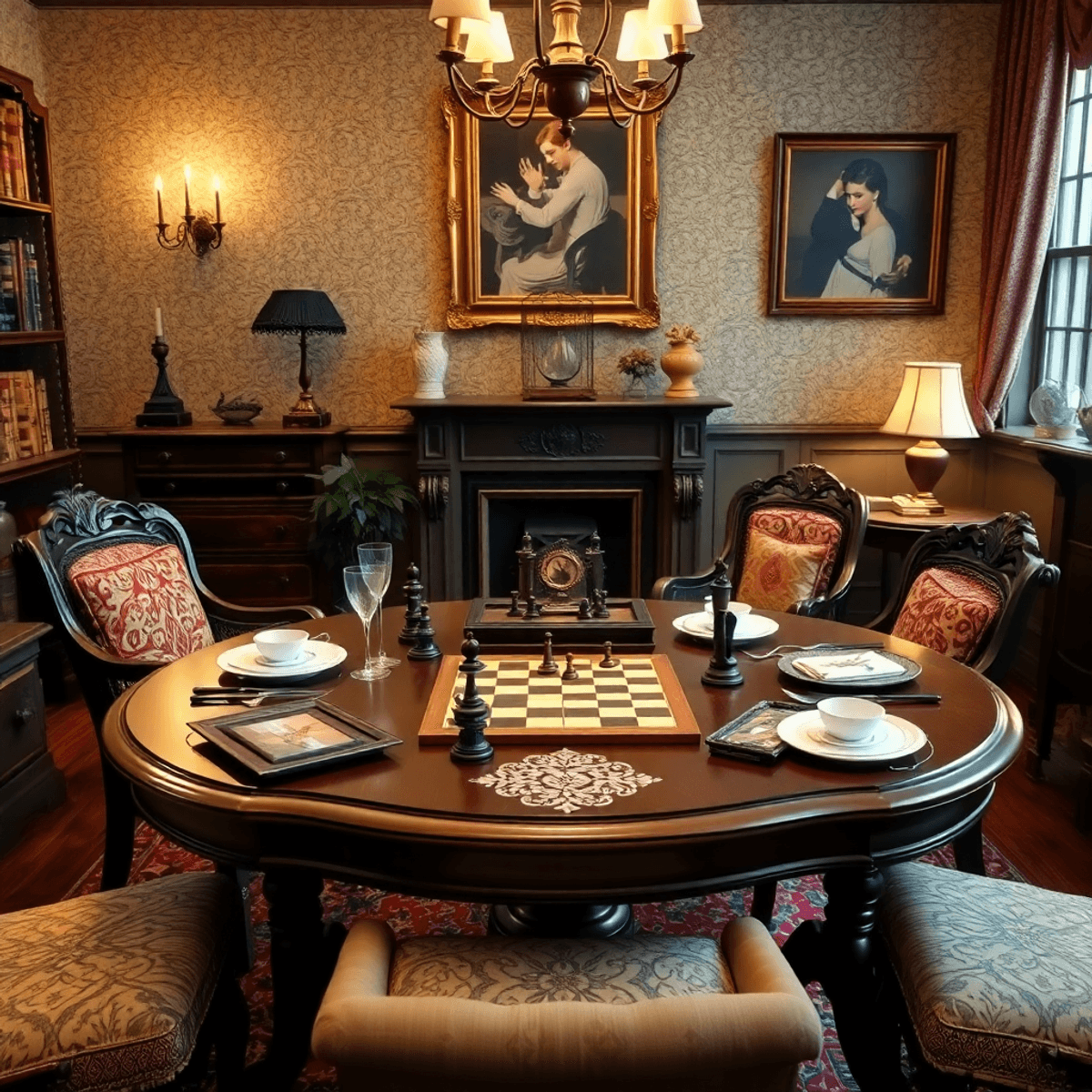
The Mansion of Happiness history dates back to 1843, making it one of the first board games published in America. Designed by Anne Abbott and produced by W. & S.B. Ives, the game reflected the Puritan values of the time. Unlike modern board games that focus on strategy or chance, Mansion of Happiness was created to teach moral lessons.
The game was inspired by European predecessors, particularly The New Game of Human Life (1790). However, it adapted its message for an American audience, emphasizing virtues like honesty, piety, and industry while condemning vices such as idleness, cruelty, and gambling.
🎲 How to Play Mansion of Happiness
Mansion of Happiness is a roll-and-move game where players advance along a circular track toward the ultimate goal—the Mansion of Happiness (Heaven).
Gameplay Overview:
- The Board Layout: The path consists of virtues and vices, each affecting player movement.
- Rolling the Dice: Players move based on a spinner or die roll, similar to modern board games.
- Moral Consequences: Landing on a virtue (such as Charity or Humility) allowed players to advance, while vices (such as Drunkenness or Lying) forced them to move backward or lose turns.
- Winning the Game: The first player to reach the Mansion of Happiness won, symbolizing their spiritual salvation.
This simple yet educational format made the game popular among religious families, reinforcing moral values through playful instruction.
📜 Mansion of Happiness and Moral Education
The Mansion of Happiness history reflects the deeply religious and moralistic nature of 19th-century America. At the time, board games were not just for entertainment; they were tools for shaping character.
The game taught children that success in life depended on virtue, not luck. Unlike games of chance, Mansion of Happiness discouraged gambling mechanics, reinforcing the idea that only righteous behavior led to true victory.
Although its strict moral framework may seem outdated today, Mansion of Happiness set a precedent for board games as teaching tools, a concept that continues in educational games today.
🎲 How Mansion of Happiness Influenced Modern Games
Mansion of Happiness laid the groundwork for future board game design, influencing titles like The Game of Life (1860) by Milton Bradley.
Key Contributions to Modern Games:
- Moral Messaging in Games: It was one of the first games to incorporate a lesson-driven experience, influencing later games that aimed to teach values.
- Path-Based Progression: Its linear movement mechanics became a standard for educational and family board games.
- Game as a Life Journey: The concept of moving through different life stages to achieve happiness later influenced games like The Game of Life and even Monopoly.
Even though most modern games emphasize strategy over moral education, Mansion of Happiness remains an important milestone in board game history.
🏆 Where to See the Original Mansion of Happiness Board?
If you want to see an original Mansion of Happiness board, you can find it in:
- The Strong National Museum of Play (New York, USA) – Features one of the earliest known copies.
- The American Antiquarian Society (Massachusetts, USA) – Holds historical documentation on the game’s origins.
- The Library of Congress (Washington, D.C.) – Preserves early American games, including Mansion of Happiness.
These institutions offer a firsthand look at the evolution of American board games.

🎭 Conclusion: The Legacy of Mansion of Happiness
The Mansion of Happiness history highlights how board games have long been used for more than just entertainment. This game was an early attempt to teach morality, shaping the future of board game design. While today’s games focus more on strategy and fun, Mansion of Happiness remains a pioneering example of how board games can reflect cultural values.
Featured image source - “Mansion of Happiness,” 1894. New-York Historical Society, The Liman Collection.



